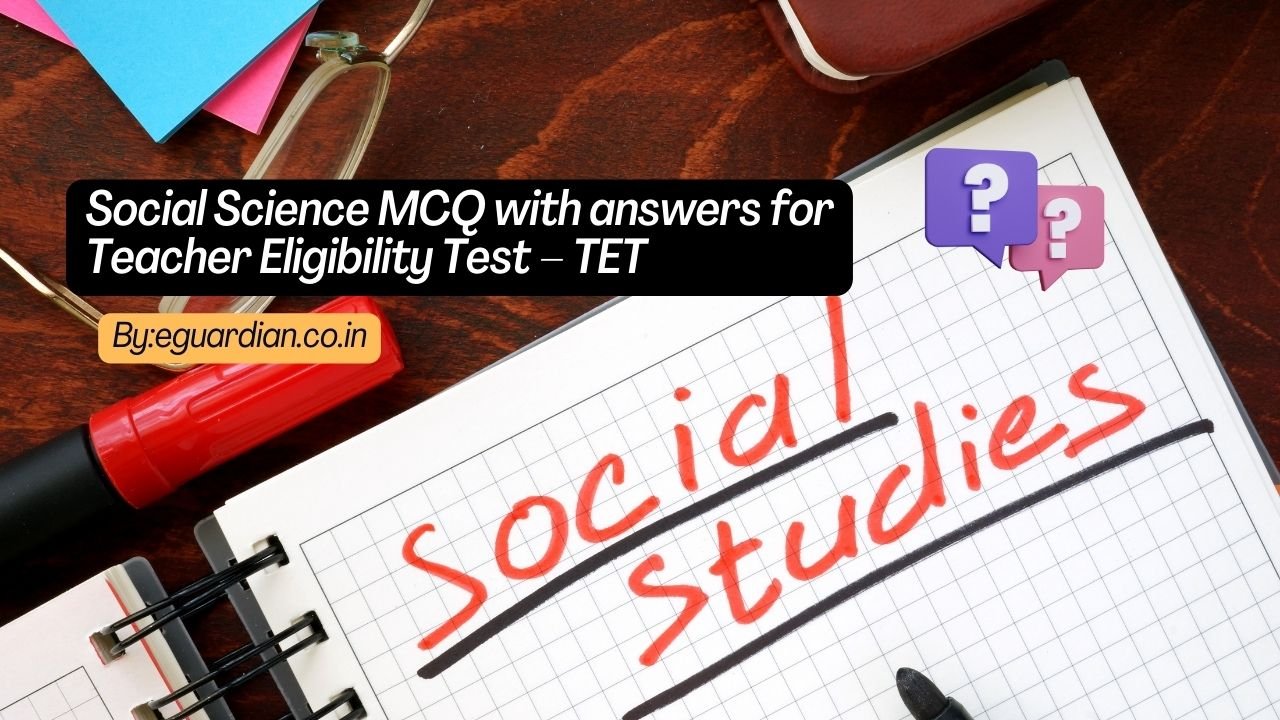Total Quality Management Multiple Choice Questions and Answers pdf for the preparation of academic and competitive examinations.
Welcome to our collection of Multiple-Choice Questions (MCQs) on Total Quality Management (TQM)! This article provides a set of MCQs along with their answers to help you test your knowledge and understanding of TQM concepts.
Total Quality Management is a management approach that focuses on continuous improvement, customer satisfaction, and employee involvement to enhance the overall quality of products and services.

Total Quality Management 100 Multiple Choice Questions and Answers.
1. ___ is primarily about detecting defective output rather than preventing it.
Ans. Quality control
2. ___ is an independent review conducted to compare some aspect of quality performance against a standard.
Ans. Quality Audit
3. These costs are enormous, running at ___ of sales.
Ans. 20%-40%
4. ___ is the outcome of poor quality.
Ans. Failure Costs
5. The ___ should be committed to making changes to maximize the profit within the given time period.
Ans. Management
6. The ___ should suit the current and the future requirements for maximum value from the available data at the minimum cost.
Ans. COQ Software
7. A ___ on quality cost should be conducted before implementing the Cost of Quality.
Ans. Literature review
8. A ___ should be issued of the categories defining the cost of poor quality.
Ans. Draft
9. ___ is a term used to describe the process of preparing and collecting data.
Ans. Data collection
10. In ___the cost of rectifying one error is estimated and multiplied by the number of errors per year.
Ans. Unit cost data
11. Cost of Quality (“COQ”) system is isolated from other ___ systems.
Ans. KPI (Key Performance Indicators)
12. The collection of Cost of Quality (“COQ”) data becomes expensive and technical over time.
Ans. True
13. In addition to cost control, project managers must also give significant concentration to___.
Ans. Monitoring cost schedules
14. Schedule observance and the existing status of a project can also be represented on ___ of a facility.
Ans. Geometric modules
15. On ___ projects, preliminary construction actions are begun even before the facility design is finalized.
Ans. Fast track
16. Work elements signify an element in a ___ medium of activities.
Ans. Two-dimensional
17. For operational quality planning, ___quantifies customer needs and product and process capabilities.
Ans. Measurement
18. Units of measure for product and process performance are usually expressed in ___ terms.
Ans. Technological terms
19. ___is the means used to make the actual measurement.
Ans. Sensors
20. Control subjects for quality are the ___ parameters.
Ans. Critical
21. Status reports enable the company to check the ___ of the auditors’ observations.
Ans. Accuracy
22. The purpose of a quality audit report is to communicate the results of the ___.
Ans. Investigation
23. The ___ of reports can also be improved with a cover letter or executive summary.
Ans. Effectiveness
24. ___ is responsible for taking corrective action and keeping the client informed about its progress.
Ans. Auditee
25. A ___ is an independent evaluation of a product’s quality to determine its fitness for use and conformance to specification.
Ans. Product audit
26. Audit results can be summarised to show the ___ of the previous inspection activities.
Ans. Effectiveness
27. Troubleshooting is the process of dealing with ___ problems.
Ans. Sporadic
28. A system is a collection of ___linked to achieving a common purpose.
Ans. Processes or elements
29. ___serves as a liaison between the auditing organisation and auditee management.
Ans. Escort
30. Log sheets are another kind of ___ prepared in advance of an audit.
Ans. Working paper
31. If the ___do not want to see a Quality culture in the organisation then procedures, tools, and database are all useless.
Ans. Senior management
32. According to the theory (Maslow, 1987), human needs fall into ___ fundamental categories.
Ans. Five
33. According to ___ the modern worker has become lazy, uncooperative.
Ans. Theory X
34. According to theory Y, there has been no change in ___.
Ans. Human nature
35. What is a hidden mechanism of coordination directing each person towards the common goal.
Ans. Corporate culture
36. Corporate culture cannot be changed through changing a ___ or issuing an ___.
Ans. Policy, edict
37. To build a quality organisation, ___ high-level skills are needed.
Ans. Three
38. Providing ___at all levels is a starting point to ensure action on quality
Ans. Quality goals and measurements
39. The most important element to motivate action within a company is ___ in quality with the evidence to prove it.
Ans. Management leadership
40. The concept of participation is a ___ principle that helps to alter behaviour.
Ans. Age-old
41. A quality product or service is one that matches ___.
Ans. Customers need
42. ___ will decide whether to include or exclude certain product features.
Ans. Designer
43. ___ steps can provide a road map for developing a new or modified product.
Ans. Quality planning
44. The requirements, and the quality, must be built into the ___
Ans. Design specification
45. ___ does not guarantee that the best design or specification is selected
Ans. Standardisation
46. ___ is a general term that means deployment of quality through the deployment of quality functions.
Ans. Quality function deployment
47. ___ is the assignment of a product to operate at stress levels under its normal rating
Ans. Derating
48. ___ is the ability of a product, when used under given conditions, to perform satisfactorily when called upon.
Ans. Availability
49. MTTR is the meantime needed to perform repair work assuming that a spare part and ___ are available.
Ans. Technician
50. ___ takes the form of frequency of occurrence of an unsafe event and or injuries per unit of time.
Ans. Hazard frequency
51. ___ become compulsory because of either customer demand or an upper management policy declaration.
Ans. Design reviews
52. ___ is the process of designing a product using all inputs and evaluations simultaneously and early during design to ensure that internal and external customers‟ needs are met.
Ans. Concurrent Engineering
53. A process design can be reviewed by laying out the overall process in a ___.
Ans. Flow diagram
54. Providing workers in the service sector with the knowledge of what they are supposed to do is essential for ___
Ans. Self-control
55. ___ is a manufacturing process that depends on the use of computerised control systems to run equipment in a provision where products are manufactured.
Ans. Automated Manufacturing
56. ___ is the process of grouping all items manufactured by a company to make out those with sufficient similarity that common designs or manufacturing plans can be used.
Ans. Group technology
57. Preproduction trials and runs provide the ___ by manufacturing real product
Ans. Final evaluation
58. ___ plays an important role in the new approach of organising the work.
Ans. Teamwork.
59. ___ should apply only to products and processes that are stabilised and meet specifications and only to workers who have expressed their competence.
Ans. Self-inspection
60. A ___ audit incorporates any activity that can change final product quality
Ans. Process quality
61. The quality measurement is made by having customers fill out the ___
Ans. SERVQUAL
62. All five weighted dimension scores are added to obtain an overall ___ score.
Ans. Weighted service quality
63. The main business concern for manufacturers is ___ and ___.
Ans. Quality improvement, quality control
64. A key element of prevention is the concept of designing the process to be error-free through ___.
Ans. Error-proofing
65. ___ is becoming the trademark for both products and services.
Ans. Quality
66. ___ is done to locate the particular areas in business that need to be improved.
Ans. Business Excellence Model
67. ___ is attached towards the right-hand side in the HOQ matrix.
Ans. Planning Matrix
68. In the required changes occur early in the project life cycle so by reducing the changes the production reduces the warranty costs and product support cost.
Ans. True
69. In ___ the products which are there in the market are compared with the existing products and are rated accordingly.
Ans. Quantitive Analysis
70. ___ states that most effect is from relatively few causes.
Ans. Pareto Principle
71. Two sets of corresponding data are plotted in a ___.
Ans. Scatter Diagram
72. ___ Implement the solutions and improvement, plan a review, gather feedback and rework on the review.
Ans. Review
73. Two of the most common essentials of risk are___ and ___
Ans. Cost, Time
74. ___ is an approach where the manager spends most of his or her time handling the unforeseen issue orders.
Ans. Fire fighting
75. The history of quality analysis, starts from simple ___ to Total Quality Management,
Ans. Inspection, TQM
76. ___ is not limited to the manufacturing sector.
Ans. Quality Analysis
77. ___ is attained when best industry practices are incorporated in all business processes, thus ensuring superiority.
Ans. Maturity
78. ___ includes everything from staffing and production to office flow and analysis of events performed.
Ans. Operational Benchmarking
79. ___ means meeting the requirements of the internal/external customer, consistently by continuous improvement in the quality of work of all the employees.
Ans. TQM
80. Quality in all spheres of activities must start with ___ within an organisation.
Ans. Quality consciousness
81. ___ is one of the factors responsible for an efficient Quality Management System.
Ans. Monitoring
82. List any three methods of Quality Control.
Ans. Data Tables, Histograms, and Pareto Analysis
83. Quality Control ensures ___.
Ans. Standards
84. ___ involves the examination of a product, service, or process.
Ans. Quality Control
85. Name any three components of a Quality Management System.
Ans. Design, Deployment, and Review
86. ___ is a measurable quantity of output per unit of input.
Ans. Productivity
87. List any two forms of productivity.
Ans. Total productivity, Total factor productivity
88. Identify any two factors determining productivity levels
Ans. Efficiency, Real cost savings
89. ___ Productivity is the ratio of the real value of output to the combined input of labour and capital.
Ans. Multi-factor Productivity
90. ___ is one of the practical ways to describe the measured productivity change.
Ans. Real cost savings
91. The organization uses Benchmarking as a model for excellence.
Ans. True
92. Quality comes from the improvement of the process and not from inspection.
Ans. True
93. ___ focuses on product defect detection through post-production inspection.
Ans. Quality Control Phase
94. ___ is the leading form of communication in an organisation. Example – Presentations and discussions
Ans. Downward Communication
95. The last and final element in the entire elements of TQM is ___.
Ans. Recognition
96. A fixation for both internal and external customers and their needs through regular feedback is ____.
Ans. Customer Orientation
97. Measurement and Audit: careful plans and periodic monitoring systems ensure excellence.
Ans. True
98. Teams that consist of small groups of skilled employees who share tasks and responsibilities are called _____.
Ans. Natural Work Teams (NWTs)
99. In this ___ a training and communication fall down to achieve management staff assurance throughout the organisation
Ans. Stage 6 – Launch
100. An important tool to study newly developed designs and concepts under development is ___.
Ans. Design Review


